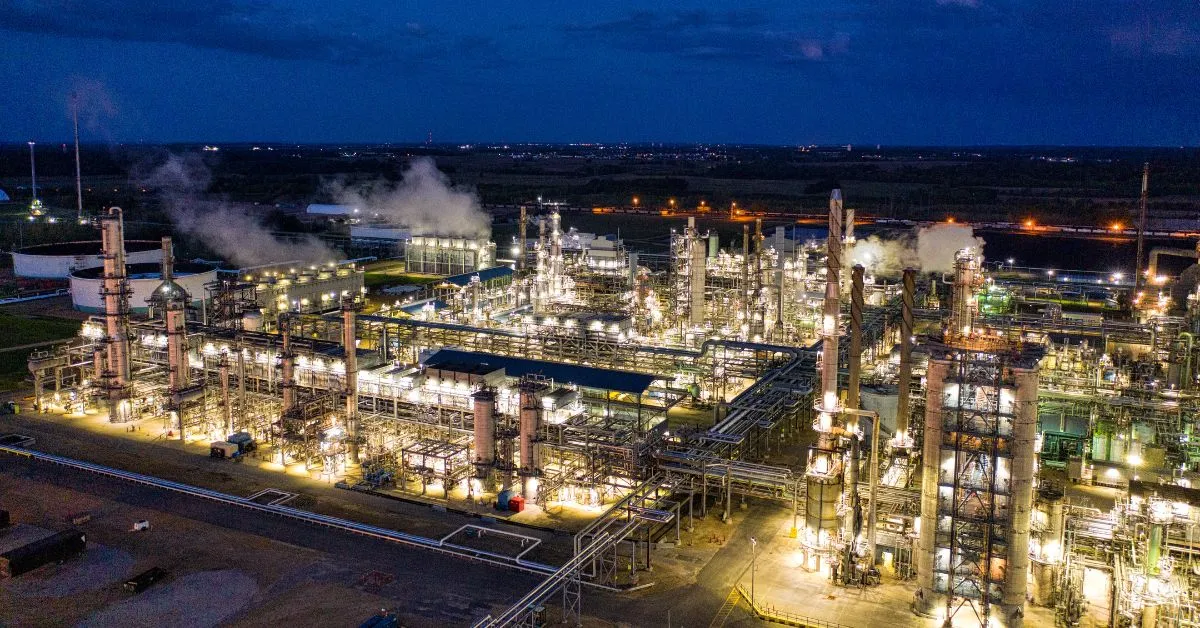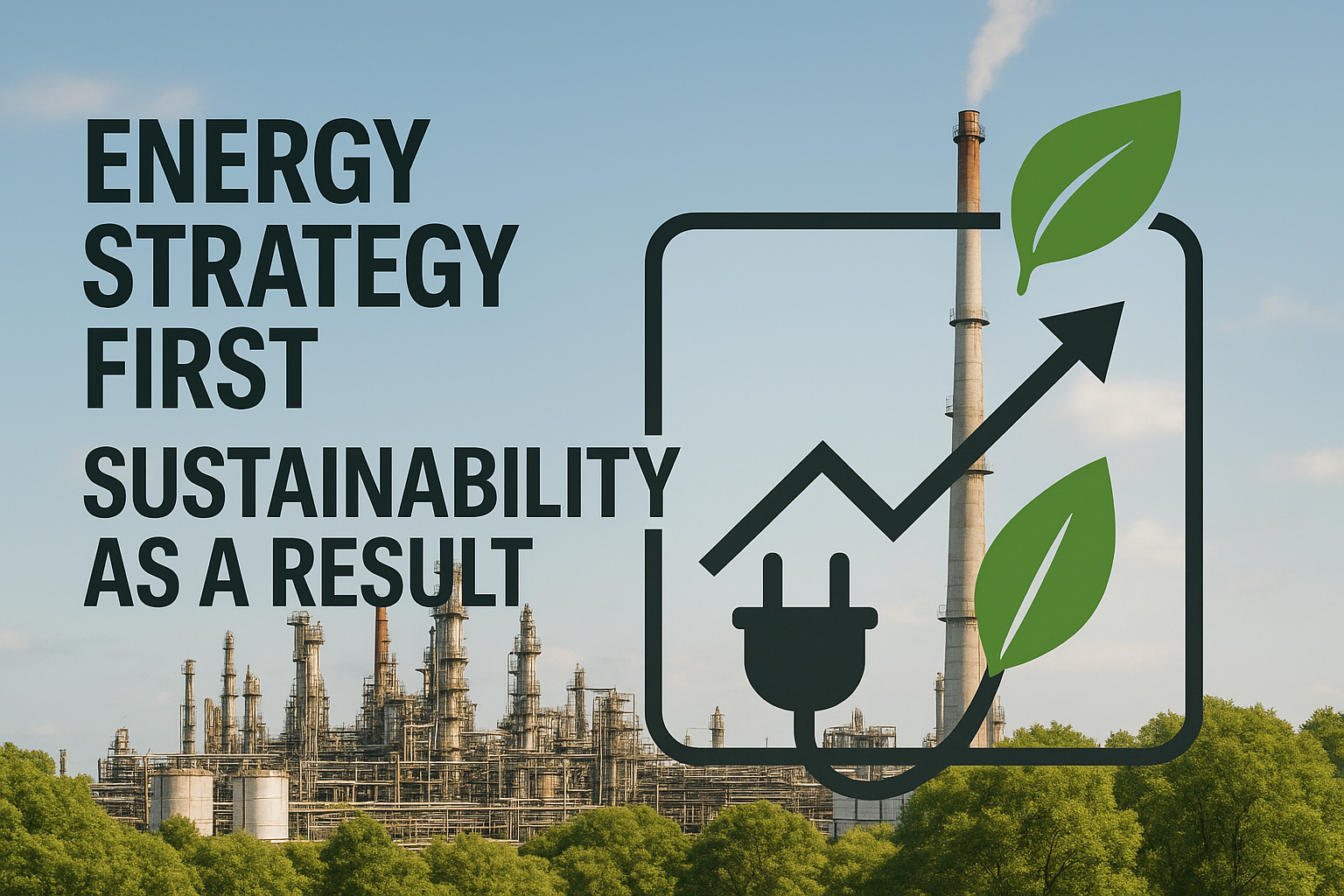Process industries consume a major share of the world’s energy, driving an urgent need to reduce consumption without compromising productivity. With global energy demand projected to grow at a compound annual rate of 1.3% through 2030, that challenge will only intensify.
As this pressure mounts, industries are turning to the next evolution in energy management: Energy 5.0. Building on the foundations of Energy 4.0, Energy 5.0 integrates artificial intelligence, high-speed connectivity, and sustainability objectives into a self-learning framework that continuously optimizes systems for efficiency and low-carbon performance.
Unlike Energy 4.0, which depends on static models and rule-based control, Energy 5.0 delivers autonomous, closed-loop optimization, eliminating manual parameter tuning and enabling real-time, data-driven energy intelligence.
The following sections explore how this transformation emerged from Energy 4.0, examine AI’s role in intelligent operations, assess workforce implications, quantify the sustainability gains, and preview the trends poised to define industrial competitiveness in the decade ahead.
From Energy 4.0 to Energy 5.0: Understanding the Evolution
Industry 4.0 put sensors on nearly every pump, valve, and furnace, but most plants still depend on engineers to pull data from silos, compare trends, and decide the next set-point change. That manual cycle limits response time to fluctuating feed quality, utility prices, or environmental constraints, leaving measurable efficiency on the table.
Energy 5.0 builds upon Energy 4.0’s connectivity foundation by combining three critical elements for continuous optimization:
- Technology: Provides low-latency 5G networks that stream high-resolution data to industrial AI models that learn in real-time
- People: Bring an upskilled workforce that interprets model feedback and steers strategic goals
- Process: Delivers closed-loop control that executes optimal moves automatically, then feeds results back into the model for continuous improvement
While Energy 4.0 focused on data collection and visualization, Energy 5.0 elevates operations to autonomous decision-making. Decisions now balance cost, throughput, and emissions simultaneously, making sustainability a profit driver rather than a trade-off. Data-driven energy management can deliver double-digit emission cuts across heavy industry, reinforcing Energy 5.0’s mandate for human-centric, resilient growth.
The Role of AI in Smart-Plant Operations
While traditional control systems struggle with static models and limited adaptability, artificial intelligence provides real-time optimization that continuously adapts to changing environments. Through instant analysis of operational data, machine learning systems identify inefficiencies and optimize processes on the fly.
These intelligent systems enhance predictive maintenance by analyzing trends in equipment data to forecast failures, reducing both downtime and unnecessary energy consumption.
The business impact proves substantial. Such applications have reported production increases of 10-15% and a 4-5% uplift in EBITA. A phased approach addresses common implementation concerns—starting with advisory modes before moving to full automation builds confidence and demonstrates tangible ROI over time.
Smart Plants: Where Technology Meets Operations
A smart plant blends a unified data layer, closed-loop AI, and tight connections to the control system and historian layers, turning scattered readings into a single decision engine. The industrial AI market is expanding rapidly, making this shift the expected baseline for process industry leaders.
Technology alone doesn’t run a plant; operators remain the critical link, using domain knowledge to validate recommendations and steward safe operations. Instead of replacing expertise, artificial intelligence amplifies it, surfacing patterns invisible to human eyes and giving teams the time to focus on higher-value problem solving.
Before granting full autonomy, a phased rollout builds trust. Start with a data-quality assessment to surface gaps and noisy tags, then deploy advisory mode that lets machine learning suggest moves while humans stay in control. Change-management practices that involve operators early and often create buy-in throughout the transition.
Common barriers still arise, but each can be addressed systematically. Legacy equipment can slow integrations; addressing this early avoids the integration complexity that derails many projects. Transparent models alleviate concerns about black boxes, and structured training equips personnel with new skills. With deliberate planning, each hurdle becomes a stepping-stone toward fully self-optimizing operations.
The Sustainability Advantage of Energy 5.0
Every kilowatt you avoid consuming translates directly into lower emissions, and Energy 5.0 is designed to find those savings in real-time. By pairing machine learning with intelligent energy management, plants gain continuous visibility into where energy is used, wasted, or recoverable, allowing setpoints to be tightened without compromising throughput.
Energy-intensive operations in cement, steel, and refining face constraints from rigid process limits that prevent optimization. Energy 5.0 replaces static rules with adaptive models that learn evolving constraints and steer each unit toward its lowest-energy operating point. The result is fewer unnecessary fuel spikes, smaller heat-rate cushions, and measurable CO₂ reductions, all while operators retain oversight through control system interfaces.
Unplanned shutdowns inflate emissions through flaring and restart cycles. AI-driven forecasting can spot equipment degradation early, letting maintenance teams intervene before efficiency drifts. Because Energy 5.0 architectures welcome on-site solar, storage, and responsive demand, they align naturally with global sustainability initiatives.
Continuous emissions tracking and automated audits simplify ESG reporting, turning sustainability from a compliance burden into a competitive edge.
Looking Ahead: The Future of Energy 5.0
The shift towards Energy 5.0 accelerates as 78% of manufacturers plan to increase AI spending within the next two years, reflecting a growing commitment to smarter energy solutions. Emerging trends center on grid-to-plant integration using 5G and edge computing, facilitating seamless communication between energy grids and plant operations to enhance efficiency and reduce costs.
End-to-end value-chain optimization represents another key development, where machine learning models adapt to electricity price signals and carbon intensity, providing real-time adjustments to reduce energy expenditure and emissions. Early adopters report 14% in savings on manufacturing costs, highlighting the competitive advantage of swift transition.
Looking towards 2030, Energy 5.0 will likely become the industry standard. Companies must start preparing now, focusing on infrastructure updates and workforce training to fully leverage the potential benefits of this transformative approach. Begin by exploring intelligent solutions and investing in continuous learning and development for your teams to stay ahead in this evolving environment.
Bringing Energy 5.0 to Your Operations
Energy 5.0 combines artificial intelligence, advanced connectivity, and sustainability objectives to create autonomous plants that protect margins while reducing carbon emissions. With proven use cases delivering consistent improvements in throughput, energy intensity, and reliability, the transformation from reactive to predictive operations is already underway.
Imubit’s Closed Loop AI Optimization (AIO) technology, delivered through the Imubit Industrial AI Platform, uses deep reinforcement learning (RL) to learn plant-specific behavior and write optimal setpoints back to the control system in real time. This approach keeps operations on target even as feed quality or market conditions shift. Built-in safeguards and advisory mode capabilities allow teams to validate recommendations before moving to full autonomy, building momentum without disrupting day-to-day production.
Get a Complimentary Plant AIO Assessment to identify where immediate efficiency and sustainability improvements can be captured. Start small, scale fast, and position your organization to lead the Energy 5.0 curve.




